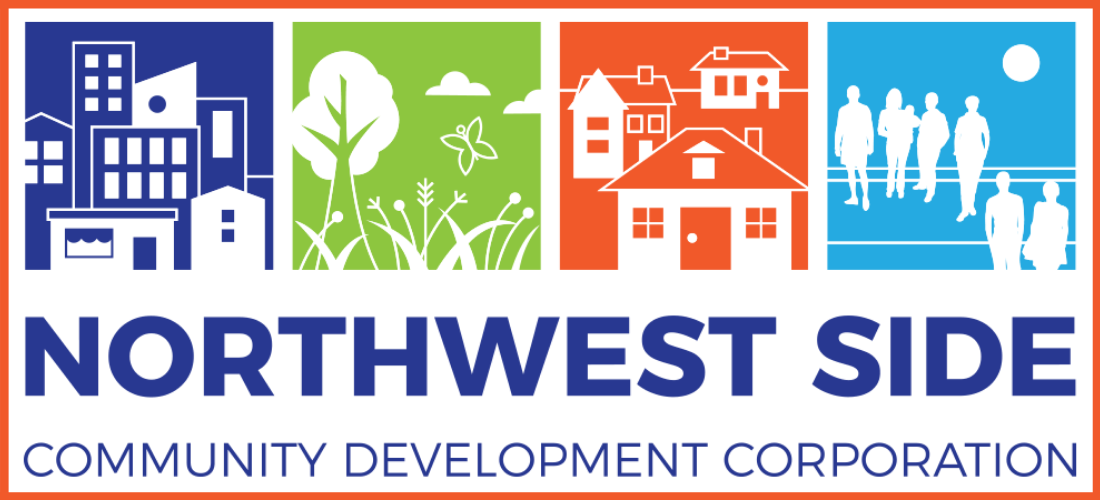ULI Report Covers NWSCDC's Role in Grantosa City Center Redevelopment
 The Urban Land Institute (ULI) Land Use Policy Forum Report, "Community Development Corporations Working with For-Profit Developers," contains a case study involving NWSCDC in the Grantosa City Center/Kohl's Food Market, a joint project that the NWSCDC undertook with a Mequon, Wisconsin–based private developer, the General Capital Group.The report notes:
The Urban Land Institute (ULI) Land Use Policy Forum Report, "Community Development Corporations Working with For-Profit Developers," contains a case study involving NWSCDC in the Grantosa City Center/Kohl's Food Market, a joint project that the NWSCDC undertook with a Mequon, Wisconsin–based private developer, the General Capital Group.The report notes:
The site for the supermarket, the Grantosa City Center, rose from the ashes of what was once a bustling retail hub on Milwaukee’s northwest side. The 6.23-acre site sits at West Hampton and West Appleton Avenues, two high-traffic-count streets. Originally developed by the Kohl family as a shared location for its food and department store chains, the property had traded hands many times to out-of-town ownership, ultimately losing both tenants in 1999.While the eastern third of the site had ever been developed, the 70,000-square-foot empty shell of the building sitting on the western edge of a vast, overgrown parking lot had become a blighted part of the community.Surveying the site in 1999, General Capital saw a big chunk of land in a very dense neighborhood underserved by name brand retailers. The same year, intrigued by the site’s potential, a new real estate director at Kohl’s Food Stores initiated a deal to reopen a supermarket on the lot.General Capital’s development plan enlarged the original supermarket from 35,000 to 62,000 square feet, and added one outlot at the never-used east edge of the site (now a McDonald’s). The store received a new front facade on the original brick. Because the city wanted an urban edge to the design, a masonry pier and wrought iron fence were added along the two main streets.General Capital undertook a design/build delivery method for the $11 million project, having found design/build to be very effective delivery method for architectural and construction services, especially in past deals with Kohl’s. As owner of the building, General Capital then leased it to Kohl’s. From the first site inspection to the store’s opening in April 2000 took approximately 12 months, and from lease execution to opening took about eight months.Although in many cities, tax increment financing (TIF) could have been used in a deal of this nature, the city of Milwaukee was reluctant to provide it, especially with a national credit retailer involved. While the city fully supported the deal, it wanted to see the project financed without public funds. Municipal approvals went quickly, due in part to Milwaukee’s “Development Center,” designed to streamline the approval process. Snyder noted, “They actually call developers ‘customers’!”NWSCD’s participation primarily was as an equity investor, helping to secure the necessary construction financing. The CDC also recruited and placed neighborhood residents as new Kohl’s employees to make up over 80 percent of the market’s workers. Although General Capital had the resources, it did not want to commit all the equity necessary for the long term. According to Snyder, “Twenty-year, triple-net deals are not hard to finance, but can present challenges in a central city environment.” Instead, a two-pronged strategy to reduce General Capital’s equity component was conceived: 1) sell, rather than lease, the outlot pad, and 2) obtain a quickly amortizing mezzanine debt component through the NWSCDC. The essential economics of the deal were:In millions of dollars (rounded)Land $4.100Site 0.500Building 2.800Soft Costs 1.200Total $8.600Less Outlot Sale 0.400Net Investment $8.200Rent (triple net) $0.875Return on Cost 10.7%Both General Capital and the NWSCDC were pleased with the results of the venture, which was a recipient of a Mayor’s Design Award in 2000—presented annually to recognize exceptional urban design in the city of Milwaukee. For the CDC, the completed project generated over 200 new jobs in the neighborhood, and a major supermarket helped to stabilize the northwest side. For General Capital, the equity investment was quicklyreduced to an appropriate level in the profitable project, and the development served to further its relationship with Kohl’s. For all, the visibility of the deal was a welcome feature.

